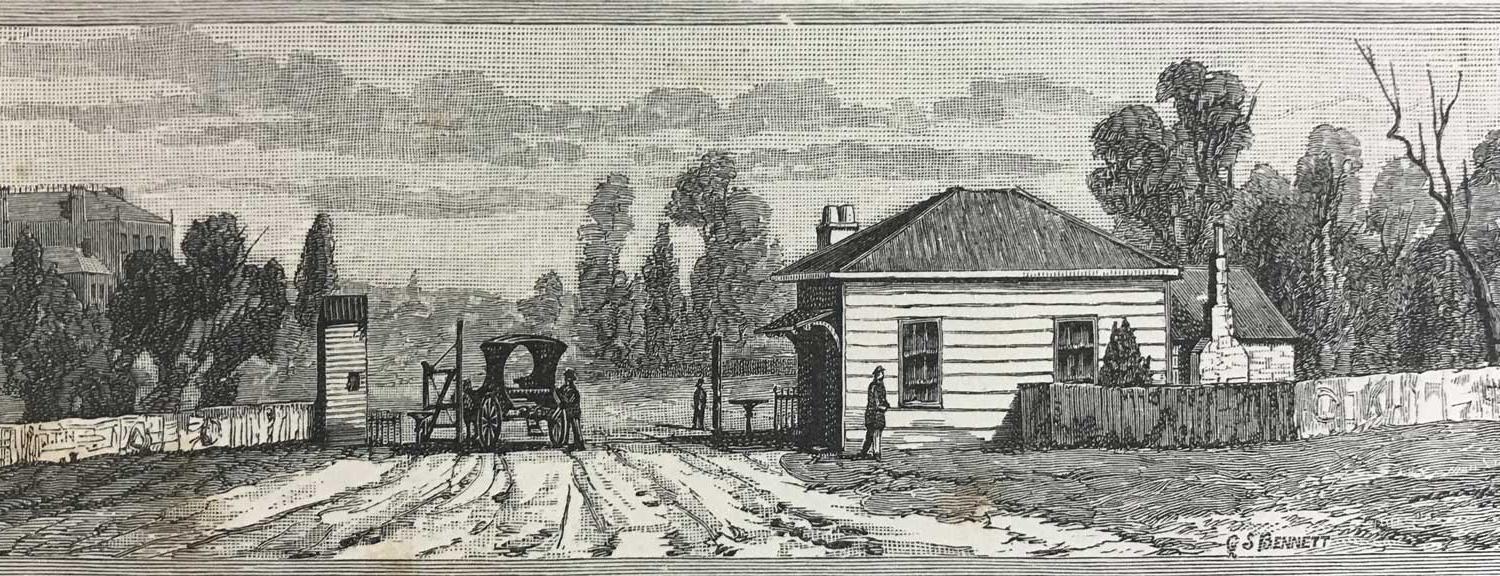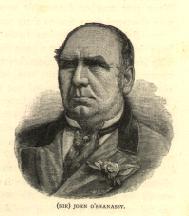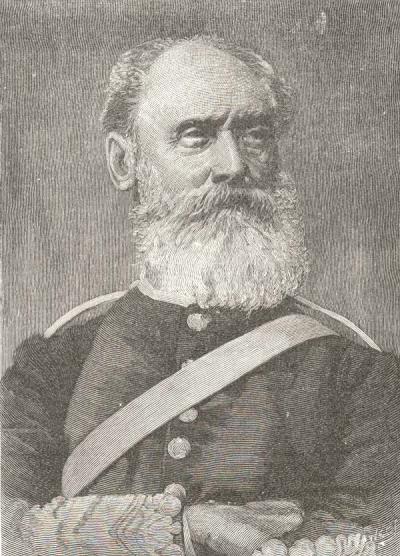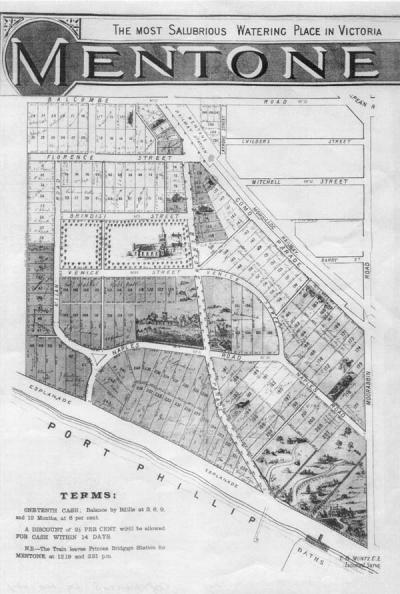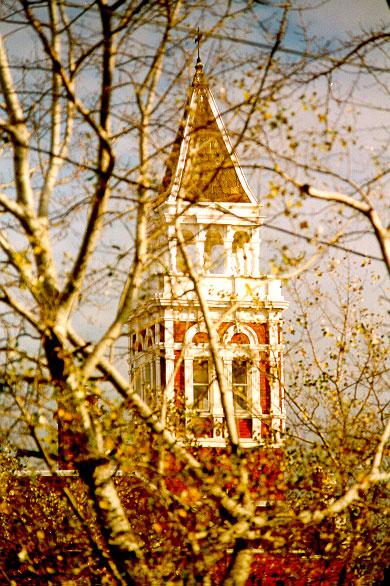There Were Toll-Gates on Nepean Highway
In the year 1858, toll-gates were installed on Nepean Road, near Cummins Lane, Moorabbin. Later, when the Mordialloc bridge toll-gates were built, the Moorabbin turnpike became known as the check toll-gates. People on their way to Melbourne from beyond Mordialloc were not charged a second time if they had already paid at the bridge.
Mordialloc’s first squatter, John O’Shanassy, was a member of Victoria’s first two house Parliament (1857). He was elected Premier in 1858 and again in 1861.
In 1859, Brighton was declared a municipality. The backblocks of the municipality, South Brighton (now Moorabbin), East Brighton (now Bentleigh), Cheltenham, and Mordialloc, complaining of neglect raised the question of severance and the formation of a new local government body, but Brighton, which had already agreed to the use of these areas as night soil dumps for the City of Melbourne night carts, practically ignored them.
A champion of the cause was Robert Keys, keeper of a wayside pub on the highway at little Brighton. Keys, a Brighton councillor destined to become a member of parliament himself, was a good friend of O’Shanassy, whose interest was engaged. The fight for severance then became a serious one with Brighton against the rest in their claim for a better deal.
In 1862, with O’Shanassy in his third term as Premier and Brighton now anxious to remove itself from control of the ‘dissenters’, the Moorabbin Road Board District was formed. The new local government body became responsible for the development of the cities of Moorabbin, Sandringham, and Mordialloc.
Colonel William Mair, who had been brought from Sydney to Melbourne to sort out the squabbles of the squatters and won, was later placed in charge of gold escorts from Ballarat before he became a magistrate, and was the first President of the Moorabbin Road Board District. Mair, between his duties as magistrate at Brighton and his honorary commitments at Moorabbin, was associated with volunteer rifle brigades; it was through these associations that he gained local popularity.
Notable events in the next few years were:
- 1865 - The first land sales in the present City of Chelsea, at ‘Long Beach’, were conducted at Carrum.
- 1867 - The Mordialloc Coffee Palace was built.
- 1868 - A Lands Department survey of the Carrum Swamp was made. Mordialloc came into the limelight as a holiday centre.
- 1871 - The Moorabbin Road Board was promulgated as a shire. Carrum swamplands were offered as a selection site. Thomas Bent was elected as the Member of Brighton when he defeated the popular George Higinbotham at the Brighton polls.
- 1873 - The first attempt was made to control the waters of the Carrum Swamp.
- 1874 - Bill passed for the abolition of the toll-gates.
- 1875 - Mr P Carrol selected the land which would later become the Aspendale Racecourse.
- 1876 - A Selection Committee of Inquiry into the problems created by the Carrum Swamp was set up. Bradshaw opened the first racecourse (Richfield) in the district.
- 1878 - B Patterson, Minister of Public Works, recommended that a 30 foot wide cutting be made through the sandy ridge that separated the Carrum Swamp from Port Phillip Bay. The work was carried out but high seas lashed at the opening and swept away more of the ridge until the opening was nearly ten times its intended size. Silting occurred which prevented the water from the Bay from sweeping inland to the swamp.
First Trains:
- 1881 - The railway line was opened from Caulfield to Mordialloc as the first section of the line to Frankston by Thomas Bent, Minister for Railways. On the evening of the opening, Alex MacDonald, the first permanent resident of Mordialloc, fell through a hole in the old wooden Mordialloc bridge and was drowned.
- 1882 - Mordialloc railway line extended to Frankston as a mixed line. The only passenger station along the line was Carrum, although there were a number of sidings (used mostly for loading sand) on the up line and the down line.
Mentone Opens Up:
- 1884 - Mentone was established as part of a plan to open up an Australian Riviera township on the Mentone Township Estate, between Como Parade, Mentone Parade, Warrigal Road (then Moorabbin Road), and Port Phillip Bay. The plan for the continental street arrangement was drawn up by Plumpton and Noall, Civil Engineers and Licensed Surveyors of Collins Street Melbourne. Part of the estate ran up to take in a portion of Balcombe Road. Some of the other streets to come into being because of the plan were Latrobe, Childers, Mitchell, Cremona, Palermo, Florence, and Brindisi Streets; Commercial and Naples Road, and Como and Naples Parades. Those with continental names were given their titles by the Mentone Township Estate company; others which were already in existence in name only were fully or partly built on.
Among some of the first people to take up residence in Mentone during these days of the land boom were J W Jones, whose timber yard was on Latrobe Street, next door to J L Caudwell, the builder. Mrs Patrick opened a drapery store in Balcombe Road and a sign outside her store pointed to ‘Saratoga’, the name that Mentone racecourse never got around to wearing. Mr Kelly owned the Post Office store on Como Parade, while six shops on Mentone Parade carried the businesses of W J Cowen (grocery), C J Hearle (estate agent), Mr Obbinson (chemist), Mr Barnell (bakery), an unknown upholster, and Beazley the butcher. Further down the road was the residence of J Johnston Esq.
De Vaug had a wood and coal business on Como Parade, next door but one to Pearce the painter on Como Parade, while on the corner of Mitchell Street was the home of D J Kekwick Esq.
Further down the street again (near Warrigal Road) was W Anketell the local Justice of the Peace, while around the corner on Warrigal Road were J R Hornby and H Young. Homes on Venice Street were owned by J Gall, L Corben, P Dobson, and J Moodie. W Fletcher lived on Mentone Parade near Palermo Street and C J Potts, C H James, and J B Davies owned homes in the same vicinity.
The modern township boasted a Mentone Public Hall, a coffee palace and a Catholic Church. The coffee palace in later years became a convent. The company even established its own Board of Works, which amounted to nothing much better than a high pressure progress association. For years it was something of a thorn in the side of the Moorabbin Shire Council with its committee making heavy demands for improvements in the new area.
